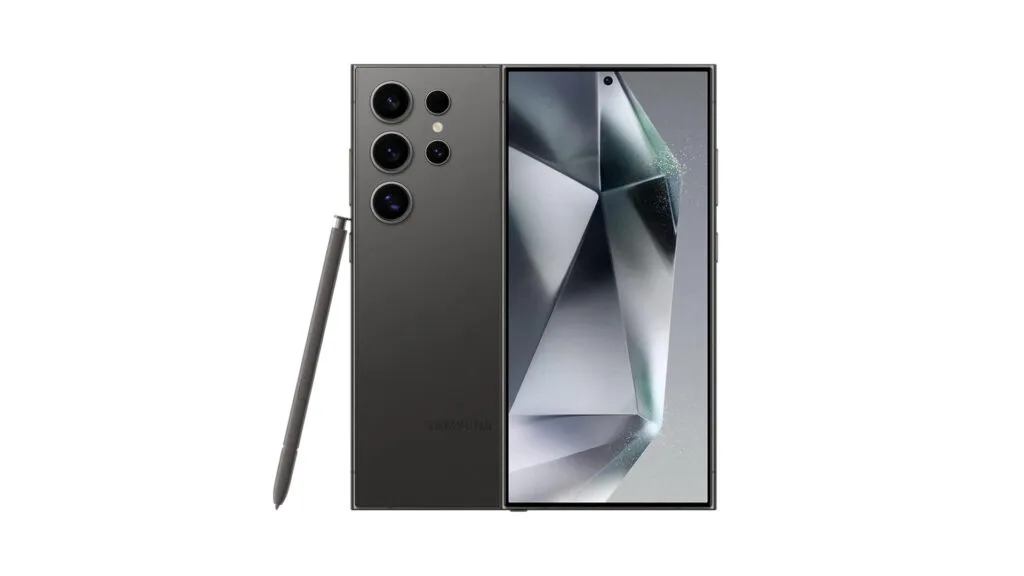When two giants of the Android world meet, the competition is fierce. In this comparison, we look at the key differences between the all-new Samsung Galaxy S24 Ultra and the well-established Google Pixel 8 Pro.
Affordable price: Google Pixel 8 Pro takes the lead
When it comes to your wallet, the Google Pixel 8 Pro wins the round. Listed at £999/$999, the Pixel 8 Pro is more affordable than the Samsung Galaxy S24 Ultra, which starts at £1,249. If you’re looking for a great Android experience without breaking the thousand-dollar barrier, the choice is clear.

Refinement vs. Innovation
The Pixel 8 Pro retains the tried and tested aesthetic of its predecessors, opting for a continuous design introduced with the Pixel 6 series. Google is banking on continuity, refining details rather than adopting a new design every year. On the other hand, the Samsung Galaxy S24 Ultra doesn’t revolutionise its appearance either, but it does stand out thanks to its titanium frame. This high-end feature, shared with Apple’s iPhone 15 Pro, adds a touch of sophistication to the overall design.
Dueling screens
Google has set the bar high with the Pixel 8 Pro’s screen. Featuring a 6.7-inch LTPO Super Actua display, this OLED screen offers 120Hz refresh and can achieve an impressive 2400 nits of brightness, ensuring an exceptional viewing experience. Samsung responds vigorously with a 6.8-inch LTPO AMOLED screen on the S24 Ultra. With a staggering 2600 nits of brightness and an adjustable dynamic refresh rate from 1 to 120 Hz, the S24 Ultra’s screen delivers exceptional visual quality and fluidity.

Optical Zoom: Samsung Reworks the Formula
Samsung surprised many by reducing its optical zoom from 10x to 5x on the S24 Ultra. However, the real difference lies in the size of the sensor. With a larger sensor, Samsung’s new 5x zoom promises an overall improvement in image quality. The S24 Ultra’s camera configuration includes a 12MP ultra-wide camera, a 200MP main camera, a 50MP telephoto lens (5x optical zoom) and a 10MP telephoto lens (3x optical zoom). The Pixel 8 Pro, meanwhile, features a triple-camera configuration with a 50MP main camera, a 48MP ultra-wide camera and a 48MP telephoto lens (5x optical zoom). The photographic battle promises to be exciting, given the exceptional performance of the previous models.

Processing power: Snapdragon vs Tensor G3
The heart of every smartphone lies in its processor, and here the two competitors are at the cutting edge. The Galaxy S24 Ultra, available in the UK, is powered by the powerful Snapdragon 8 Gen 3 for Galaxy. On the other hand, the Pixel 8 Pro sports Google’s Tensor G3 processor. Both are based on 4nm architecture, but Samsung has the edge in terms of raw processor speed. In addition, the S24 Ultra offers advanced gaming features, including hardware-accelerated ray tracing.
Artificial Intelligence: Galaxy AI vs. Tensor G3 features
AI plays a central role in modern smartphones, and here the two rivals have their own strengths. The Pixel 8 Pro relies on Google’s Tensor G3 chip, with innovative features such as Video Object Eraser to remove unwanted elements from your videos. Samsung, on the other hand, has responded with Galaxy AI, incorporating features such as Chat Assist, phone call translation, voice recording summarisation, and Circle to Search, enabling searches to be made on the fly.
Conclusion: The Choice Depends on Your Priorities
Ultimately, the choice between the Samsung Galaxy S24 Ultra and the Google Pixel 8 Pro depends on your priorities. If you’re looking for a more affordable option without sacrificing quality, the Pixel 8 Pro is your best bet. However, if you value an exceptional photographic experience with a redesigned zoom and are prepared to spend a little more, the S24 Ultra could be the ideal companion for you. In the same throw the S24 Ultra’s superior processing power is another plus for this phone, with a focus on gaming and fast performance. But on the other hand, you can compensate by opting for AI-based features, such as Video Object Eraser, and the Pixel 8 Pro’s Google ecosystem. Either way, both offer exceptional performance, and the choice will depend on your individual preferences.
Related:
